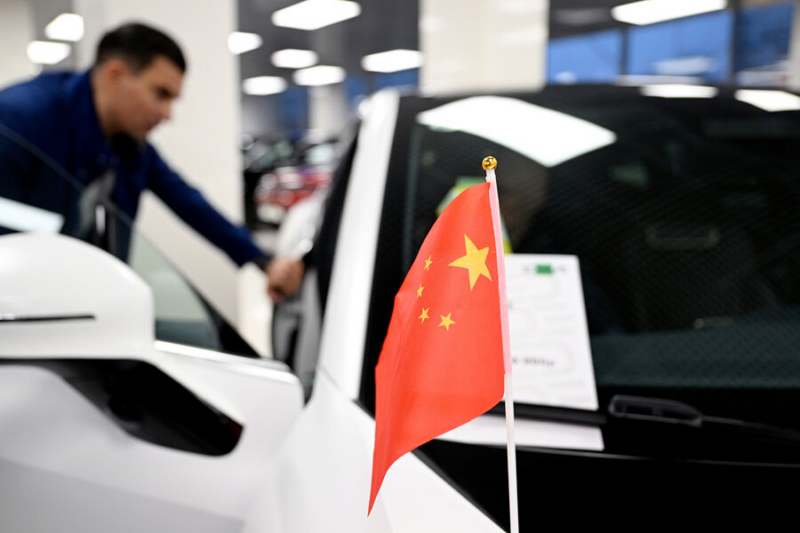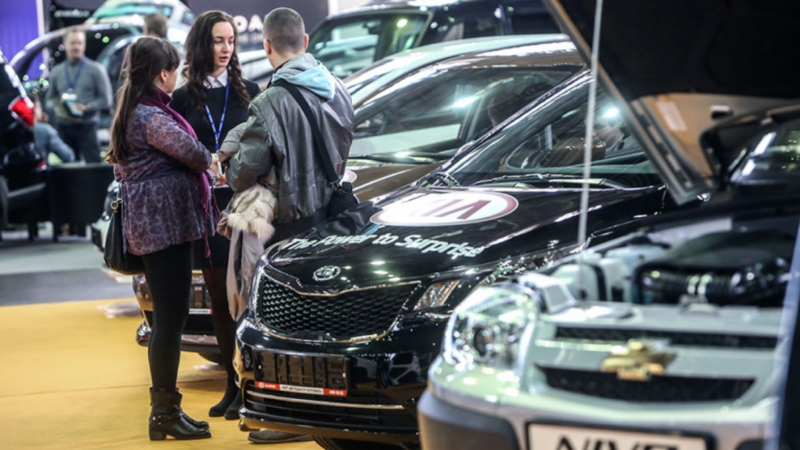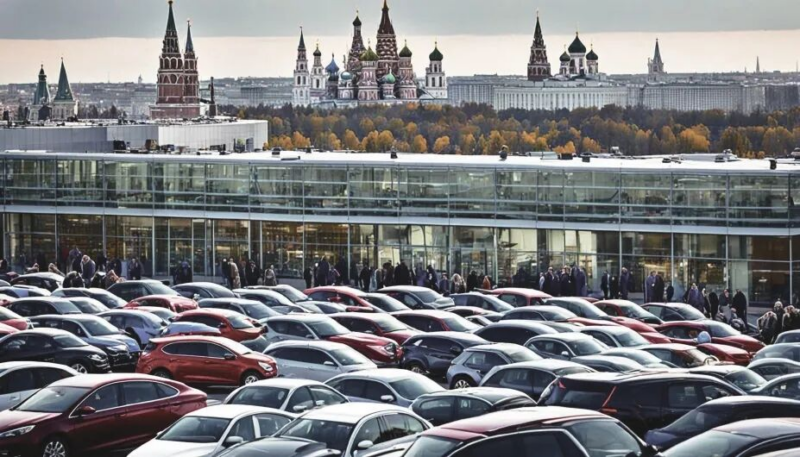The era of “easy money” for Chinese automakers in Russia has come to an abrupt end. Once a highly lucrative market where each exported vehicle could fetch tens of thousands of yuan in profit, Chinese car exports to Russia have seen a dramatic decline, battered by a combination of tightening policies and a cooling market.
According to data released by the China Passenger Car Association (CPCA), from January to September this year, China exported 357,700 complete vehicles to Russia, a significant year-on-year drop of 58%. This sharp decline means Russia is no longer China’s largest automotive export destination.
Mexico has emerged as the top destination for Chinese auto exports with 410,700 units, followed by the UAE with 367,800 units. Russia, which was China’s largest export market for the past two years, has now fallen to third place.

Before the outbreak of the Russia-Ukraine conflict in February 2022, Chinese automotive brands had a relatively low presence and market share in Russia. In 2021, for instance, Chinese brands sold a total of 115,700 vehicles in Russia, capturing approximately 7% of the market. However, the subsequent conflict led to comprehensive Western sanctions against Russia. European, American, Japanese, and Korean automakers, pressured by sanctions and concerned about operational risks, suspended production and sales in Russia, with many even divesting local assets at low prices. This created a massive void in the Russian automotive market, which Chinese carmakers swiftly moved to fill.
In a short period, Chinese automotive brands proliferated across Russia, rapidly seizing market share. In 2023, China’s auto exports to Russia surged to 950,000 units, an almost five-fold increase compared to 163,000 units in 2022, propelling Russia to become China’s top automotive export market. Sales of Chinese brands in Russia also saw a significant leap, exceeding 500,000 units in 2023 and capturing nearly 50% of the market. In 2024, Russia maintained its position as China’s largest automotive export market with 1.158 million units.
However, the “high-growth myth” for Chinese cars in the Russian market came to a halt in 2025. A series of policy adjustments introduced by Russia proved to be the critical blow to export profits. In October 2024, Russia drastically increased the recycling fee for imported vehicles by 70% to 85%. For example, the recycling fee for used cars with engine displacements between 2 and 3 litres and over three years old skyrocketed from 1.3 million rubles (approximately 16,000 USD) to 2.37 million rubles (approximately 29,300 USD), instantly squeezing the profit margins of imported car companies and dealers.
Adding to the woes, in January 2025, Russia further raised import tariffs on vehicles to 20% to 38%, leading to increased customs clearance costs. These combined taxes created a “heavy tax burden” on imported cars, completely eroding the price advantage of Chinese vehicles.
The tightening policies also directly targeted the once-common “grey channels.” Following the 2022 conflict, Chinese carmakers often re-exported new vehicles to Russia via third countries like Kazakhstan, labelling them as “zero-kilometre used cars” to circumvent high taxes. This was a significant factor in the surge of Chinese car sales in Russia.
However, in April 2024, Russia closed this loophole, requiring vehicles entering from the Eurasian Economic Union to pay the difference in taxes before being allowed on the road. This channel blockage not only eliminated the price advantage but also exposed a critical after-sales service shortcoming – these unauthorised vehicles often lacked quality assurance and repair services, severely impacting the reputation of Chinese brands.
The domestic economic environment in Russia further suppressed demand. To curb high inflation, the Russian central bank has maintained its benchmark interest rate at a high of 21% for an extended period. As a result, local auto loan annual interest rates have soared to around 30%. Coupled with the passing on of taxes and fees, statistics show that the average selling price of cars in the Russian market has significantly increased to 3.35 million rubles (approximately 41,400 USD), leading to a sharp cooling of consumer demand.
Furthermore, with the easing of the Russia-Ukraine conflict, foreign brands such as Toyota, Renault, Hyundai Motor, and Kia have signalled their intention to return to Russia. This has led to a strong wait-and-see attitude among many Russian consumers, further impacting Chinese automotive sales.

A report from the Russian Ministry of Industry and Trade indicates that new car sales in Russia decreased by 25% year-on-year to 1.014 million units from January to September 2025. During the same period, CPCA data shows that sales of Chinese independent brands in Russia were 576,000 units, nearly halving year-on-year.
Facing drastic market changes, automakers have begun to proactively defend their positions. Statistics show that in the first quarter of 2025, 274 car showrooms closed in Russia, with 213 of them being Chinese automotive showrooms, accounting for nearly 80%. Leading carmakers are also scaling back operations.
For example, in its 2025 Hong Kong IPO prospectus, Chery explicitly stated that due to factors such as reduced gross profit margins caused by increased recycling fees for imported cars in Russia, Chery plans to reduce its operational scale in Russia in 2025 and had already completed the sale of some Russian assets and sales channels in April 2025. The prospectus also mentioned that Chery would gradually reduce its existing brands and distribution channels in Russia until 2027.
Source: Tidenews



